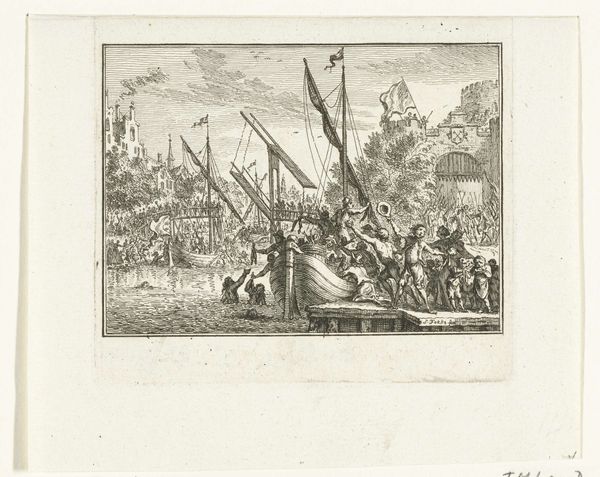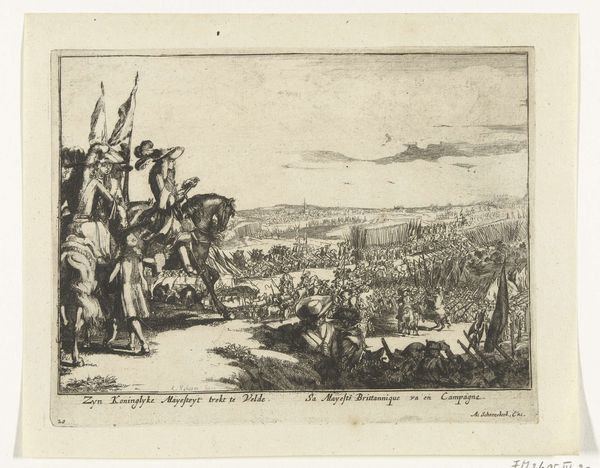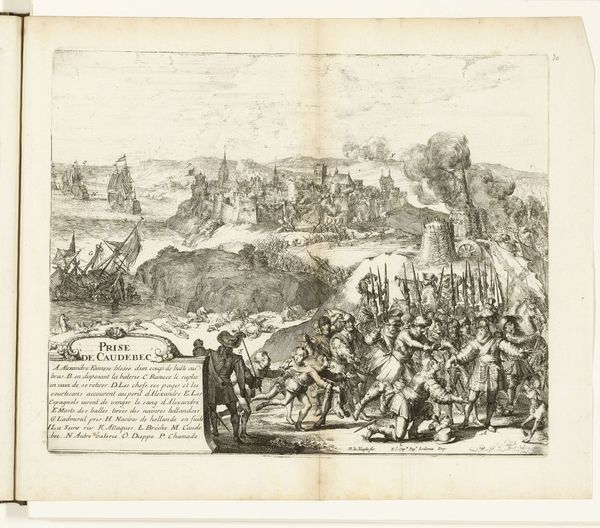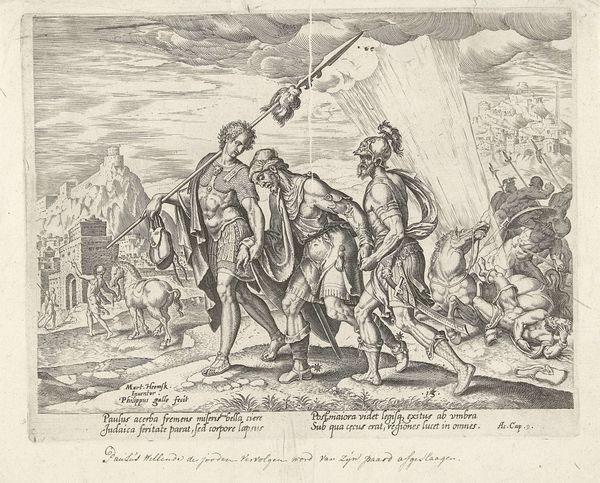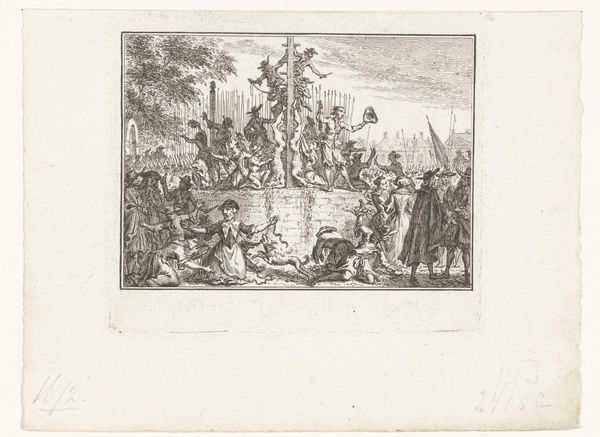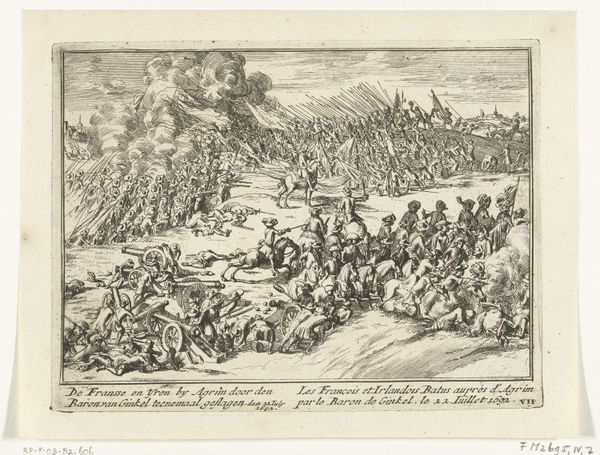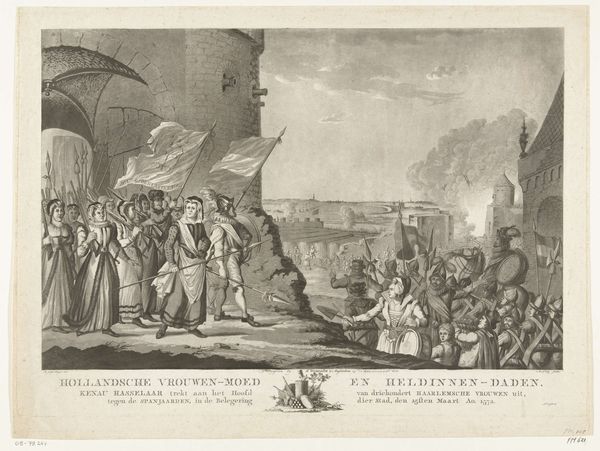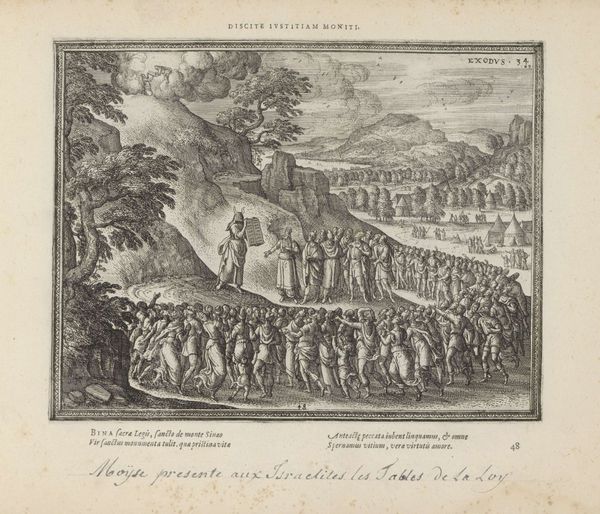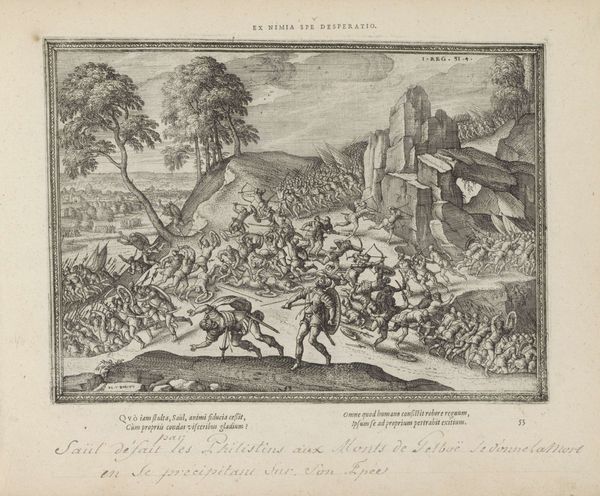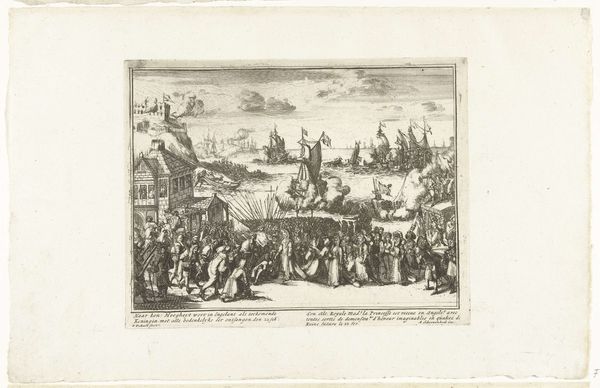
Willem III slaapt de eerste twee dagen in een vissershutje bij de Engelse kust, 1688 1689
0:00
0:00
print, engraving
#
narrative-art
#
baroque
# print
#
history-painting
#
engraving
Dimensions: height 151 mm, width 190 mm
Copyright: Rijks Museum: Open Domain
Curator: Look at this detailed engraving by Pieter Pickaert, created in 1689. It’s titled "Willem III slaapt de eerste twee dagen in een vissershutje bij de Engelse kust, 1688," or, "William III sleeps the first two days in a fisherman's hut on the English coast, 1688." Editor: The first impression is one of anticipation, almost suspense. Despite the rudimentary dwelling, there's a strong sense of momentous historical events about to unfold. Curator: Absolutely. It captures a pivotal moment in British history—William of Orange's arrival, which led to the Glorious Revolution. Consider the narrative Pickaert constructs. Here’s this figure, freshly landed on English soil, immediately faced with stark living conditions. It underscores ideas around hardship and new beginnings. But perhaps it’s strategic; connecting with the common people... Editor: It resonates, especially looking at the use of symbols like the white flag—evoking surrender—combined with figures crowding around a makeshift structure. The hut symbolizes humility, certainly. And note that cluster of figures huddled near the fisherman's hut—they act almost as witnesses or perhaps participants in a ritualistic transfer of power. Curator: Exactly. I see it as a challenge to the Stuart monarchy's grip. William strategically presented himself not as a conquering force, but as a reluctant participant, almost a savior, answering the call of the English people. The scene itself reinforces Dutch support; note the details of the ship’s presence on the horizon, reminding us of William’s power. Editor: It's the careful juxtaposition of grandeur, like the fleet of ships in the background, with this incredibly basic shelter that gives it so much power. What does it tell us about the English understanding of power and authority at the time? Pickaert captured that moment. Curator: It's tempting to view this simply as documentation. However, the careful staging transforms the mundane into a symbol of enormous significance. Editor: And those symbols still hold weight, resonating today. This one simple engraving contains complex codes we are still working to interpret.
Comments
No comments
Be the first to comment and join the conversation on the ultimate creative platform.

